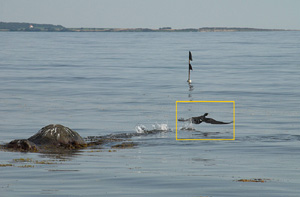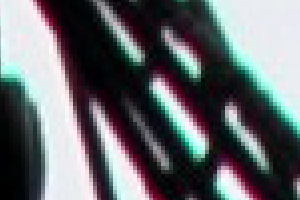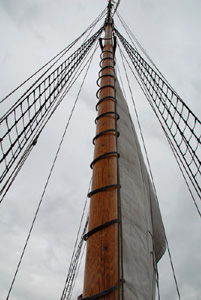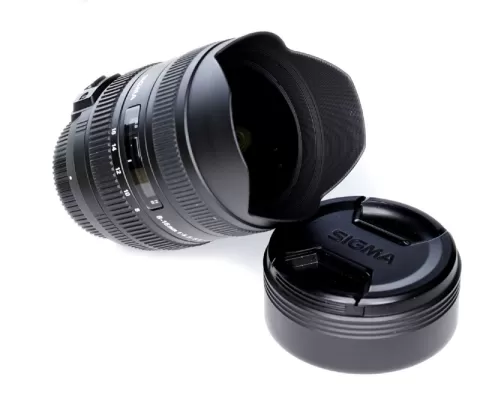An amazing set of specifications for a small lens. Wide zoom range, inner focussing and vibration reduction. But the trees do not grow into the sky...
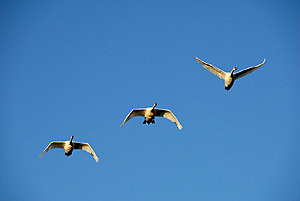
[Nikon D200, Nikkor 18-200 f3.5-4.5 VR]
Nikon AF-S Nikkor 18-200mm 1:3.5-5.6G DX ED VR IF SWM! Nikon sure does have ways of naming their glass. Nothing simple there for sure. Not much poetry. Just a long list of acronyms.
Well, don't let that cheat you: this is a nice lens with lots of potential image poetry. It's the ultimate walkaround lens.
I picked up mine the day that I started this article, which was a lot sooner than I had feared. The shop said that there was almost a six moth backlog on this lens, but I wound up waiting less than a month. I acquired this lens on specifications and reviews alone. I never handled it before today.
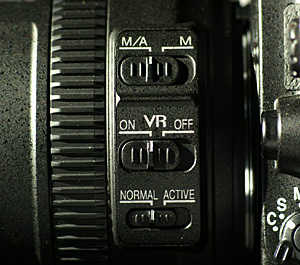
Amazing lens
There is no doubt about the merrits of this lens: it's just amazing. It produces some really fine images in a zoom range that makes almost any other lens unnecessary. Its wide zoom span, the vibration reduction and its close-up capability gives it so many uses that it's close to being the perfect walkaround lens.
I have shot with it for a couple of days now, but still have to get to know it better. It has produced some swell pictures, but first and foremost it's the versatility of this lens that has surprised me.
It is easy to see the quality difference between this lens and the glass I usually shoot with. It is not quite as sharp, its bokeh is not convincing in spite of the rounded aperture-blades, and the lack of brightness really emphasizes the need for the VR. I have shot a couple of hundred shots, but I still haven't seen one really razor-sharp picture. All my shots with this lens on the D200 have a slight blurriness to them, quite a few are out of focus and many of them are shaken in spite of the fact that I had the VR-function on 95% of the time.
According to Nikon this new and improved VR II system should save you 4 stops, effectively making this lens an f1.2-1.7 lens if you "translate" it that way. In other words sufficient to be used where you would need an f1.2 lens. I have yet to see the rock steady proof (pun intended) that this lens can actually create tack sharp images under low-light conditions with long exposure times.
Of course I need to get to know the lens better before I pass judgement, and I am sure that I'm gonna love this lens in the long run. I just need to learn how to use it to its full potential. But I'm sure it will never get to deliver the quality that my Sigma 24-70 f2.8 or my "beercan" Minolta 70-210 f4 can deliver. Time will tell.
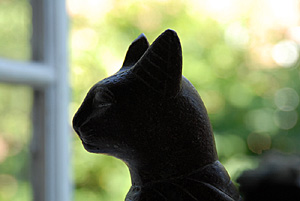
[Nikon D200, Nikkor 18-200 f3.5-5.6 VR]
Look at the two images above. Both have been shot with the 18-200 and with a few seconds interval. They clearly demonstrate the amazing span of this lens. Notice that the wide one to the left has been shot at 24mm, meaning that there is even more angle and perspective to yield in the wide end.
Size and build
My initial reaction was that it was smaller and lighter than I had expected. Pictures of it don't show relative size, and most places I had seen it, it could easily have been as large as any 24-70mm f2.8 or Nikon's own pro grade 2.8 lenses. It isn't.
It's small.
And it's lightweight.
Lightweight like in "amateur lens", which I guess is how most reviewers would classify this lens. It has all the hallmarks of a non-pro lens: small, light, extends when zoomed and not overly bright.
The build is not sturdy, and it's a far cry from almost all other lenses I have. I have always liked the "built-like-a-tank" style, and that is not what I get here. The finish on the lens is nice enough and the zoom and focus rings work well. It has the looks of its bigger brothers, but not quite the mechanical quality.
It also extends dramatically when zoomed, and that long proboscis does not exaxtly feel rock solid. But the worst part about the long snout is that it creeps. Whenever you point the camera down it will slowly extend. I have heard about people using tape and rubber bands to keep it from doing so, but actually just lived with it myself.

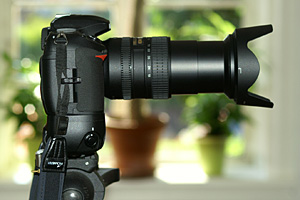
Brightness
I also like bright lenses, and my 24-70mm f2.8 Sigma has been a trusty companion for many years. I only own few lenses over f4, which is basically where this lens starts. It's noticeably darker than what I usually use, and even though the vibration reduction helps, I'm almost sure I will miss the brighter lenses, and I can't help thinking what an f2.8 lens could do for exposure times compared to what VR allegedly will do for this one.
Alas, this lens is not supposed to compete with pro grade f2.8 and f4 lenses, but is supposed to compete with the average wide-to-short-telephoto zoom, and that it does with straight A's.
If you want an all-round lens the 18-200mm VR is going to be hard to beat.
Very capable
This lens is slowly growing on me, and I'm still more impressed with its abilities. Below you see an example of its amazing feats. The two shots are all taken from the same position on the beach. My friend Nils is shooting a couple of comorants on a stone in the water, seen in the right hand side of the 18mm wideangle image. I have then zoomed in to full zoom at 200mm as the birds flew off. The second image shows that, while the third one is a 1:1 crop taken from the RAW-file, which serves to show what amaount of detail you will find in these pictures.
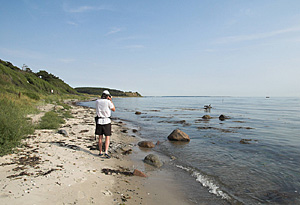
[Nikon D200, Nikkor 18-200 f3.5-5.6 VR]
Chromatic Aberration, distortion and vignetting
Update mid August 2006: As I wrote in the beginning of this article, the trees do not grow into the sky, and after having shot about 1,200 shots with the 18-200 I can now confirm that that is a fact and that this lens is too good to be true.
I still love it, but after having shot all sorts of situations with it I can now reveal that:
- it has quite a lot of Chromatic Aberration, and not only in the edges and corners
- it distorts significantly in the wide end. Most wide-angles do, but anyhow
- it vignettes noticeably in the long end
- Its VR does not guarantee sharp images. Actually it's not even close. Stability requires a tripod
This lens is of course not a replacement for good pro grade lenses, and my recent experiences have just underlined my wishes for a 17-55mm f2.8 and an 80-200 or 70-200 f2.8.
I still find the 18-200 a fantastic piece of engineering, and I am certainly going to use mine for a lot of shoots, but I will stock up on something even better as soon as I get the money for it.


